Potential to rough the viewer
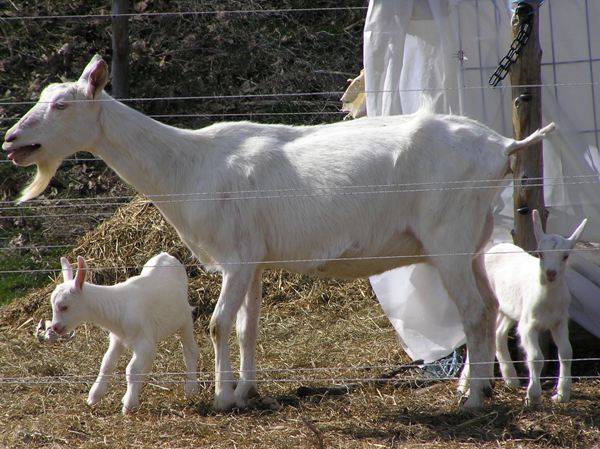
These are our bucklings from April 2009. A pretty pair of boys. We kept them to breed in the fall. Keeping them into the winter costs a lot of hay, but having them to breed two of our does saves $100 in breeding fees.
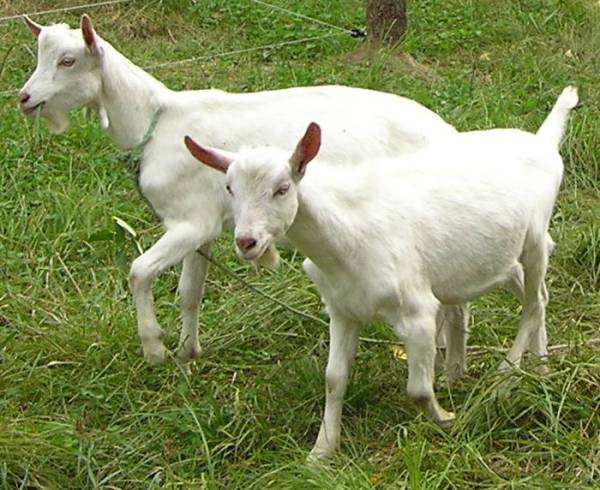
Just a warning, not everyone is going to see the happy ending in all this.
Having dairy animals has certain realities. Chiefly, without a pregnancy there is no milk. And chances are, the progeny of that pregnancy doesn't have a long term place on the farm. So, from the day they were born, the day these knives got sharpened was coming.
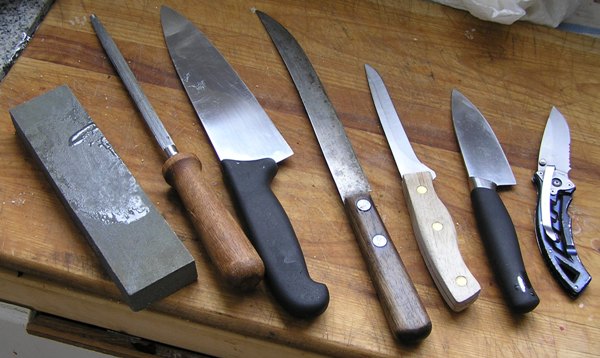
I used a pistol for the actual deed. I have used other methods, and this was the first time I used a pistol, but the pistol is probably the best method for me. It has the downside of introducing lead shot into the carcass. But I am probably not dedicated enough to do anything with the brain anyway. I borrowed a semi auto ruger .22 target pistol that uses long rifle rounds. A pistol gave me a lot more freedom of movement than my rifle and it was nice knowing there would be an immediate second shot if I needed it. I didn't though, they both went down with one shot behind the ear each. I led them up to the arch with grain and they we eating a little grain treat when I killed them so there was never any stress. They were never conscious of anything being wrong.

I used the Arch of the Garden gate to hang and bleed out the carcass. Hanging for the skinning and rough cuts helps keep the meat clean. Most of the skinning I do with the mini chef knife looking knife. The blade length is good and it holds an edge well. The utility knife on the end is good for separating joints. It has a thick strong blade and the serrations go through cartilage nicely. Down at the house, most of the work is with the boning knife.
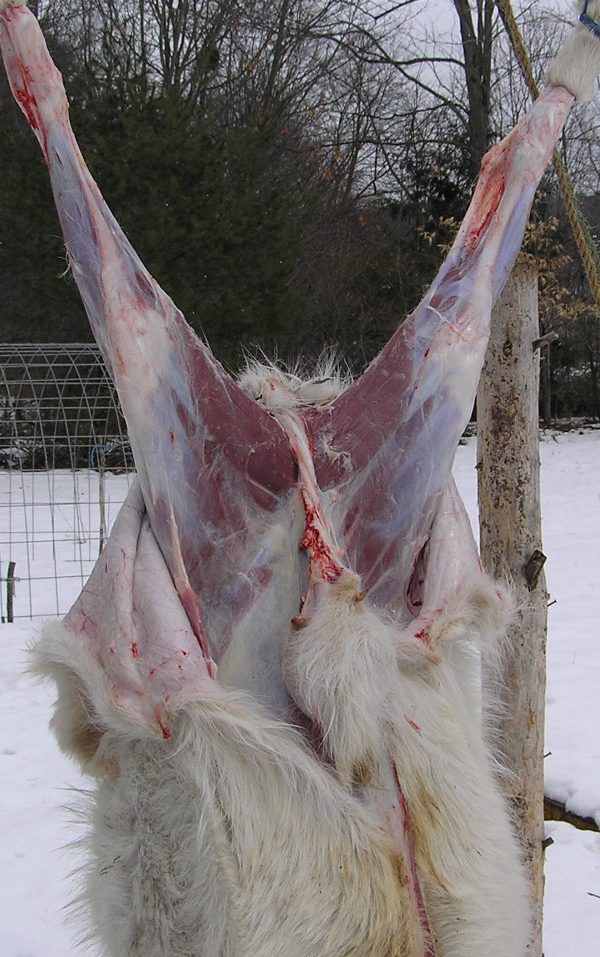
I did the skinning and the rough cuts with it hanging. That's a change from what I have done in the past and it worked out much better this way. It meant I could piece it into a clean bucket to carry it down to the house. Carrying down the whole carcass would have been awkward. I separated it into the four legs, two sides of ribs, neck roast, the hips and chops.
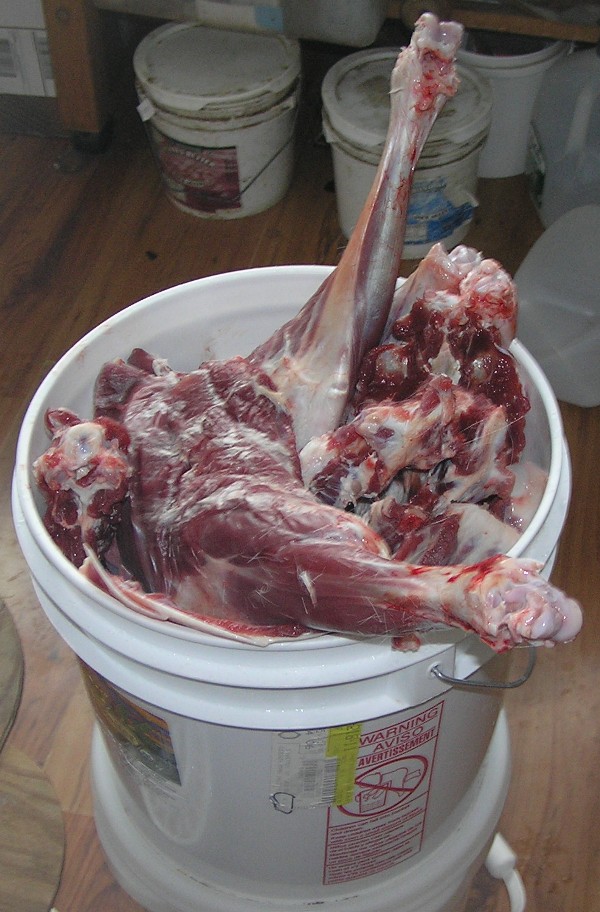
Down in the kitchen, I completely deboned it. Last time we cooked the meat on the bone. With the ribs it was a detractment from the meal trying to find the meat on the bone. It was a curry in a thick sauce. So this goat I deboned everything but the neck.
I was a little surprised in the yield. 28 lbs before I deboned it. Heck, it's not that much bigger than a good sized turkey. And I am pretty sure the live animal was close to 100 lbs. He was 11 months old. Not much in the way of fat, but that is what I would expect from a goat.
It's not a pleasant task, but a necessary one if we are going to continue to keep goats for Dairy.


3 Comments:
If the goat was 100lbs whole, live, that's 28lbs of bonless meat, or 28%.
A 100lb pig will be a 75lb dressed carcass, head and skin on, guts out.
a 75lb dressed carcass will be 56lbs of typical retail cuts some of which will be bone-in cuts, like the hams, porkchops or ribs.
I'd guess that the yield from a 100lb live weight pig, with all the bones removed, would be somewhere around 40lbs -- which actually isn't that far from 28.
By Bruce King, at 8:30 PM
Bruce King, at 8:30 PM
28% deboned meat would have been nice, but it was 28 lbs before deboning. That's why I compared it to a turkey. I didn't weigh the deboned meat, but I would guess it was close to 20 lbs.
Given that Saanens are a dedicated dairy breed, I don't expect a great yield of meat. But it is a lot of work for 20 lbs of meat. Since I am not going to keep the bucklings, though, and I am not willing to jump through the hoops to sell it legally, the other option would be to kill it and compost the carcass. My morals won't let me do that.
I probably should have chosen one buckling to keep for breeding and slaughtered the other back in August. The yeild would have been lower in august, but so would the investment of hay and managment.
I am contemplating mixing in some Boer genetics to improve the yeild equation though.
By MMP, at 8:50 AM
MMP, at 8:50 AM
Yield was one of the issues I shifted away from sheep. But, I like eating them and they graze well with our other animals. I imagine goat tastes similarly delicious.
Nice to see you're melted out. Give my best to Baloo and family.
By Walter Jeffries, at 4:33 PM
Walter Jeffries, at 4:33 PM
Post a Comment
<< Home